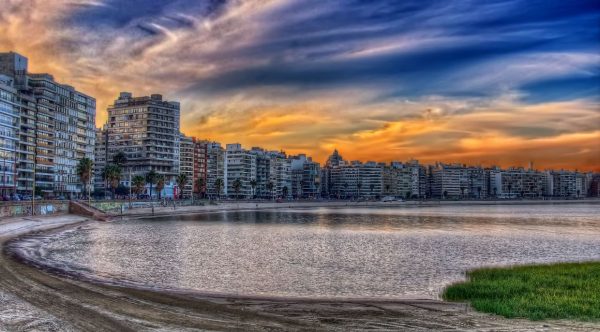The heart of Uruguay, the largest and capital city, Montevideo houses almost a third of the country’s population and is known for its wine, oil refineries, and many well-known enterprises. The city is an urban powerhouse.
Established around 1724, it was born out of a strategic move due to the Spanish-Portuguese conflict taking place during that time. Over the four centuries of its history, the city has grown rapidly and has become a pillar in the country.
Over the years, the city has been under many influences, from the roots with the Spanish Empire, a short hold by the British Empire, rapidly changing hands with the Spanish Empire, Rio de la Plata, the Federal League, Portuguese Empire, the Empire of Brazil and eventually, after over 100 years, at 1828, Montevideo has fallen under Uruguay, where it has stayed to this day.

Given the unique circumstances of the city, there’s undoubtedly a plethora of artifacts found across the city. And with the buildings like the Plaza Independencia and Mercado Agricola Montevideo, you wouldn’t be wrong.
The former stands as the most important plaza in Montevideo. It serves as a location that separates the old and new parts of the city. The square is also home to many important buildings, like Solís Theatre, Estévez Palace, and the Executive Tower, the last two serving as the workplace of the President of Uruguay.
The building that stands out the most is Palacio Salvo, designed by Mario Palanti, an Italian architect, looks like a mix of a 19th to 20th-century building and a castle, creating a unique and eye-catching structure.

Serving as the political and economic center of the country, the city has a greatly developed industrial infrastructure. From tourism to retail, media, transport, and much more, Montevideo has plenty to offer.
For example, the tourism sector accounts for a large part of the Uruguayan economy. The heart of Montevideo tourism is Ciudad Vieja, an area full of the oldest buildings found in the city, nightclubs, museums, and art galleries.
Not to mention, it’s just nearby the aforementioned Plaza Independencia, making it the center of culture and heritage of the city. If you want a quick tour around the main attractions, the Ministry of Tourism offers an up to three-hour-long tour through the city.
As Uruguay is situated in South America, the city sees some wonderful, yet subtle weather, less like the bigger sister countries of Argentina and Brazil, but more so like some European countries, found on the opposite side of the hemisphere.
During the winter months, the temperatures stay around 21 to 23 degrees Celsius (70 to 73 degrees Fahrenheit), while the summers fall to a subtle breeze of 11 to 12 degrees Celsius (51 to 53 degrees Fahrenheit).
While the temperatures are quite mild and to a certain degree uncharacteristic of the region to some, the record temperatures truly show it’s a South American country. Uruguay saw a record-high year of 43 degrees celsius, seemingly making it fully join the party with its border countries. But if you plan a visit any time soon, don’t expect temperatures that are too drastic.

The capital city of Uruguay shows its varied and interesting history and Montevideo on its own stands as a unique and intriguing city that has seen its own share amount of change and development.
From its old town to the gorgeous and luxurious modern districts, the city has proved itself to be a powerful player in Latin America, even though the seemingly bigger Argentina and Brazil tend to overshadow the much smaller country, it has prevailed and grown and is a wonderful destination for a visit.
But if you’re of a belief that an image talks louder than a thousand words, how about a look through one of the free webcams you can find on this site!





Leave a reply